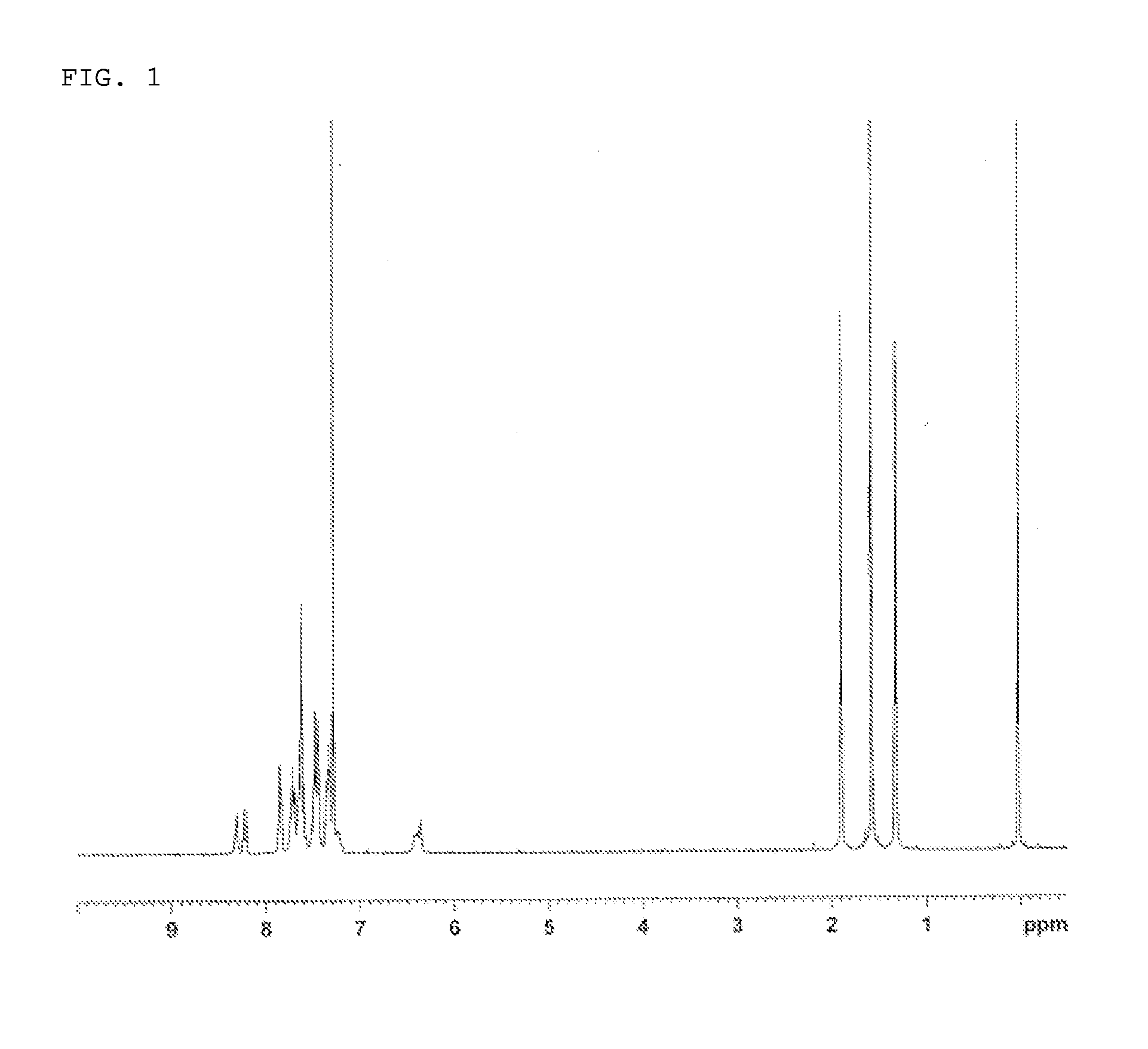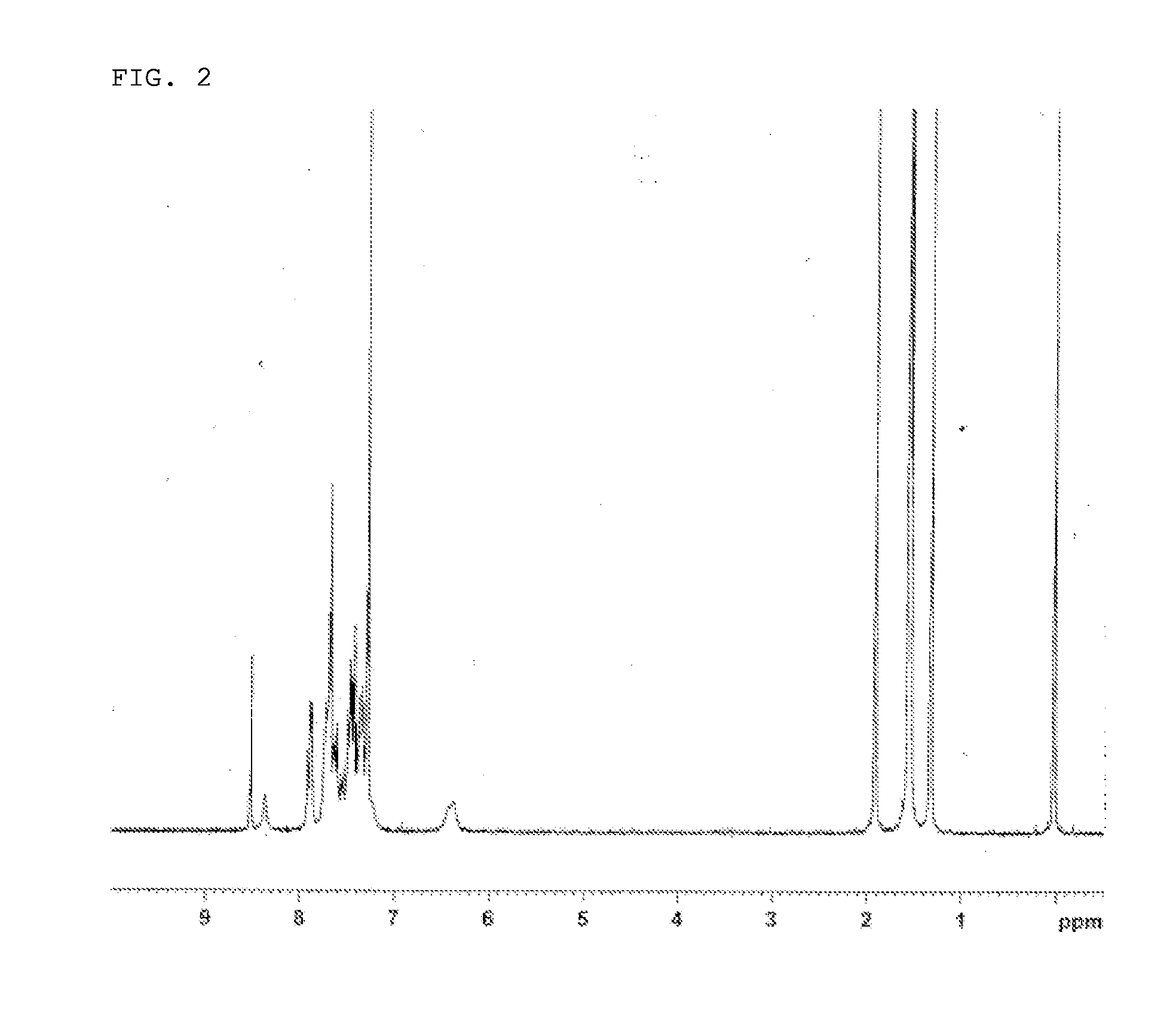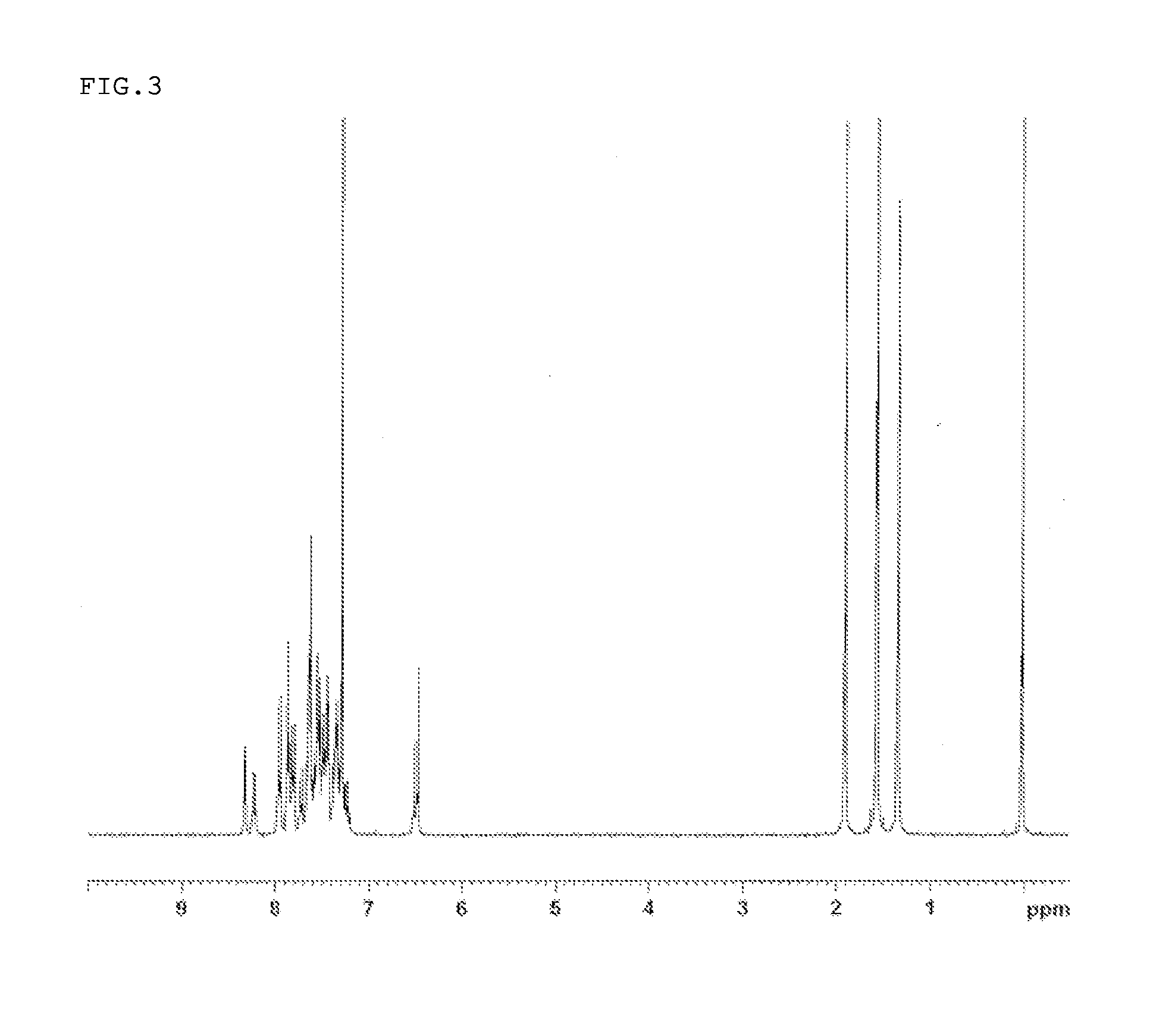Compound having indenoacridan ring structure, and organic electroluminescent device
- Summary
- Abstract
- Description
- Claims
- Application Information
AI Technical Summary
Benefits of technology
Problems solved by technology
Method used
Image
Examples
example 1
Synthesis of 7,7,13,13-tetramethyl-5-phenyl-2-(9-phenyl-9H-carbazol-3-yl)-7,13-dihydro-5H-indeno[1,2-b]acridin (Compound 2)
[0118]2-Amino methyl benzoate (35.4 g), 2-iodo-9,9-dimethyl-9H-fluoren (50.0 g), tert-butoxy sodium (22.51 g), and xylene (500 ml) were added to a nitrogen-substituted reaction vessel, and aerated with nitrogen gas for 1 hour. The mixture was heated after adding tris(dibenzylideneacetone)dipalladium(0) (2.9 g) and a toluene solution of tri(tert-butyl)phosphine (50% (w / v); 3.8 g), and stirred at 115° C. for 5 hours. After the mixture was allowed to cool to room temperature, water and toluene were added to perform liquid separation in order to collect an organic layer. The organic layer was dried over anhydrous magnesium sulfate, and concentrated under reduced pressure to obtain a crude product. The crude product was purified by column chromatography (support: silica gel, eluent: toluene / n-hexane) to obtain a yellow powder of 2-{(9,9-dimethyl-9H-fluoren-2-yl)amino...
example 2
Synthesis of 2-(3,3-dimethyl-1-phenyl-1,3-dihydroindeno[2,1-b]carbazole-10-yl)-7,7,13,13-tetramethyl-5-phenyl-7,13-dihydro-5H-indeno[1,2-b]acridin (Compound 3)
[0126]2-Bromo-7,7,13,13-tetramethyl-5-phenyl-7,13-dihydro-5H-indeno[1,2-b]acridin synthesized in Example 1 (8.4 g), 3,3-dimethyl-1-phenyl-10-(4,4,5,5-tetramethyl-1,3,2-dioxaborolane-2-yl)-1,3-dihydroindeno[2,1-b]carbazole (8.9 g), a 2 M potassium carbonate aqueous solution (26 ml), toluene (67 ml), and ethanol (17 ml) were added to a nitrogen-substituted reaction vessel, and aerated with nitrogen gas for 1 hour. The mixture was heated after adding tetrakis(triphenylphosphine)palladium (0.6 g), and stirred at 72° C. for 5 hours. After the mixture was allowed to cool to room temperature, the mixture was extracted by adding toluene in order to collect an organic layer. The organic layer was dried over anhydrous magnesium sulfate, and concentrated under reduced pressure to obtain a crude product. The crude product was purified by ...
example 3
Synthesis of 5-(biphenyl-4-yl)-7,7,13,13-tetramethyl-2-(9-phenyl-9H-carbazole-3-yl)-7,13-dihydro-5H-indeno[1,2-b]acridin (Compound 18)
[0129]2-Bromo-7,7,13,13-tetramethyl-5-(biphenyl-4-yl)-7,13-dihydro-5H-indeno[1,2-b]acridin synthesized in the same manner as Example 1 (15.5 g), 9-phenyl-9H-carbazol-3-yl boronic acid (8.4 g), a 2 M potassium carbonate aqueous solution (42 ml), toluene (124 ml), and ethanol (31 ml) were added to a nitrogen-substituted reaction vessel, and aerated with nitrogen gas for 1 hour. The mixture was heated after adding tetrakis(triphenylphosphine)palladium (1.0 g), and stirred at 72° C. for 4 hours. After the mixture was allowed to cool to room temperature, the mixture was extracted by adding toluene in order to collect an organic layer. The organic layer was dried over anhydrous magnesium sulfate, and concentrated under reduced pressure to obtain a crude product. The crude product was purified by column chromatography (support: silica gel, eluent: methylene ...
PUM
 Login to View More
Login to View More Abstract
Description
Claims
Application Information
 Login to View More
Login to View More - R&D
- Intellectual Property
- Life Sciences
- Materials
- Tech Scout
- Unparalleled Data Quality
- Higher Quality Content
- 60% Fewer Hallucinations
Browse by: Latest US Patents, China's latest patents, Technical Efficacy Thesaurus, Application Domain, Technology Topic, Popular Technical Reports.
© 2025 PatSnap. All rights reserved.Legal|Privacy policy|Modern Slavery Act Transparency Statement|Sitemap|About US| Contact US: help@patsnap.com



